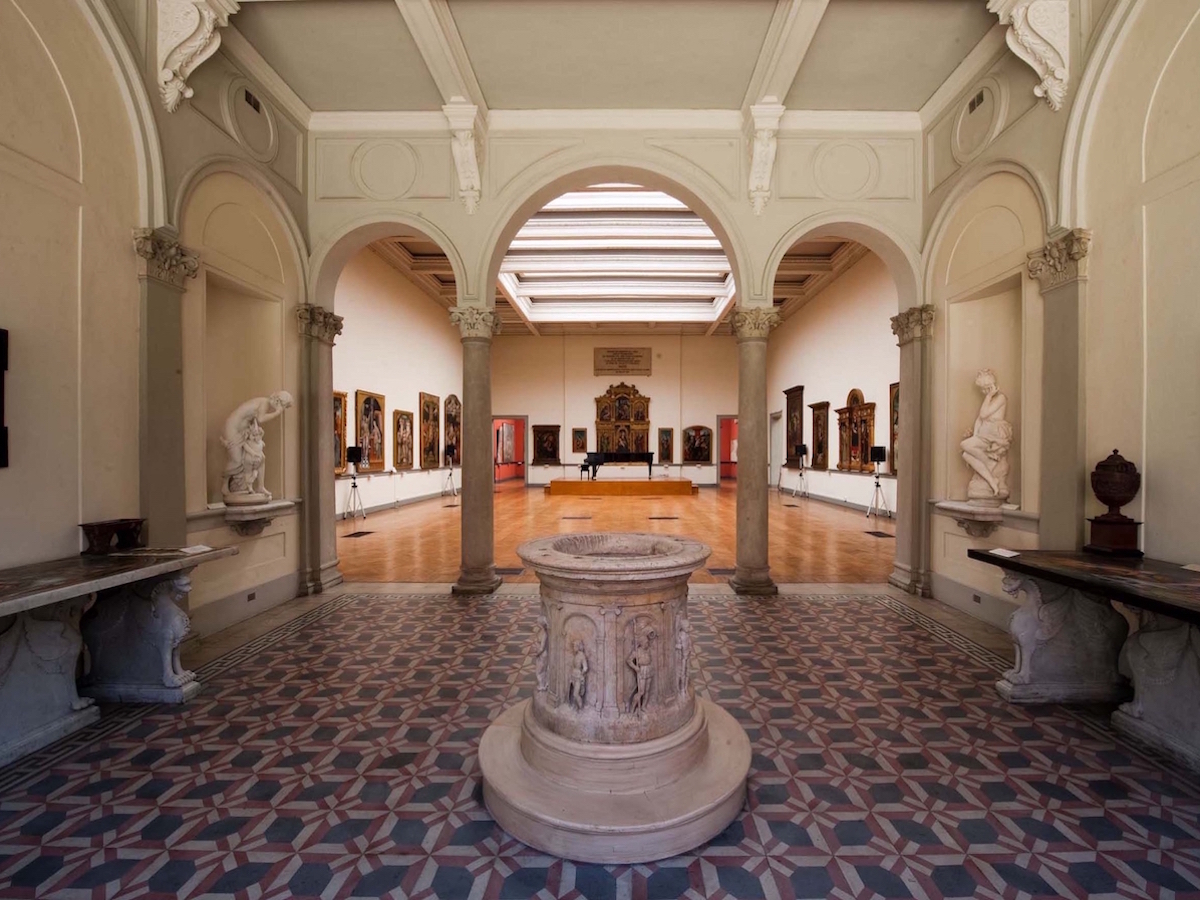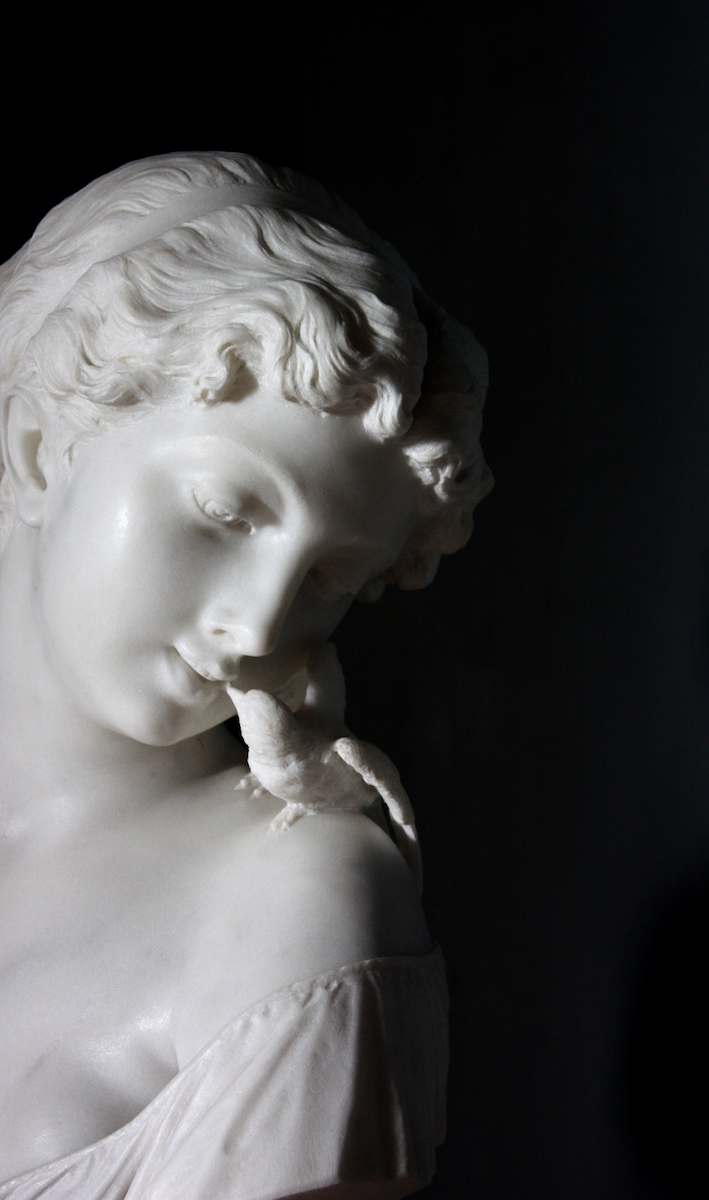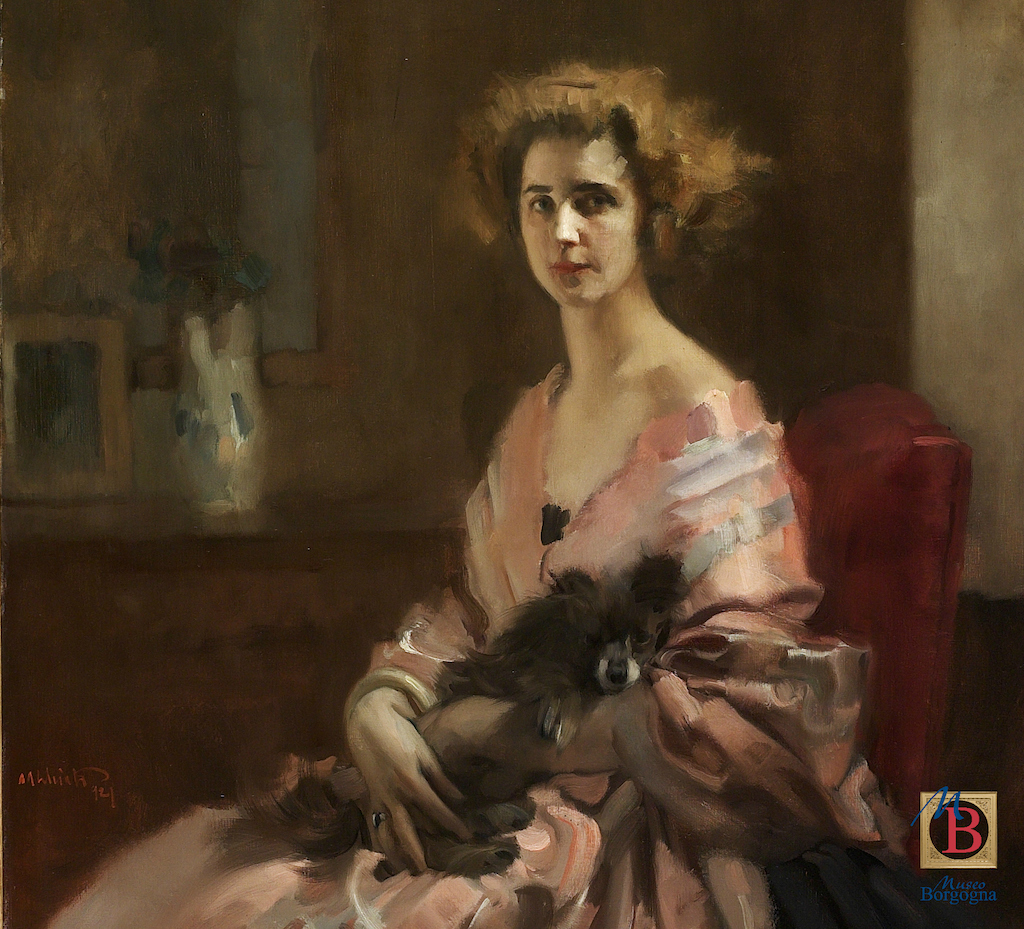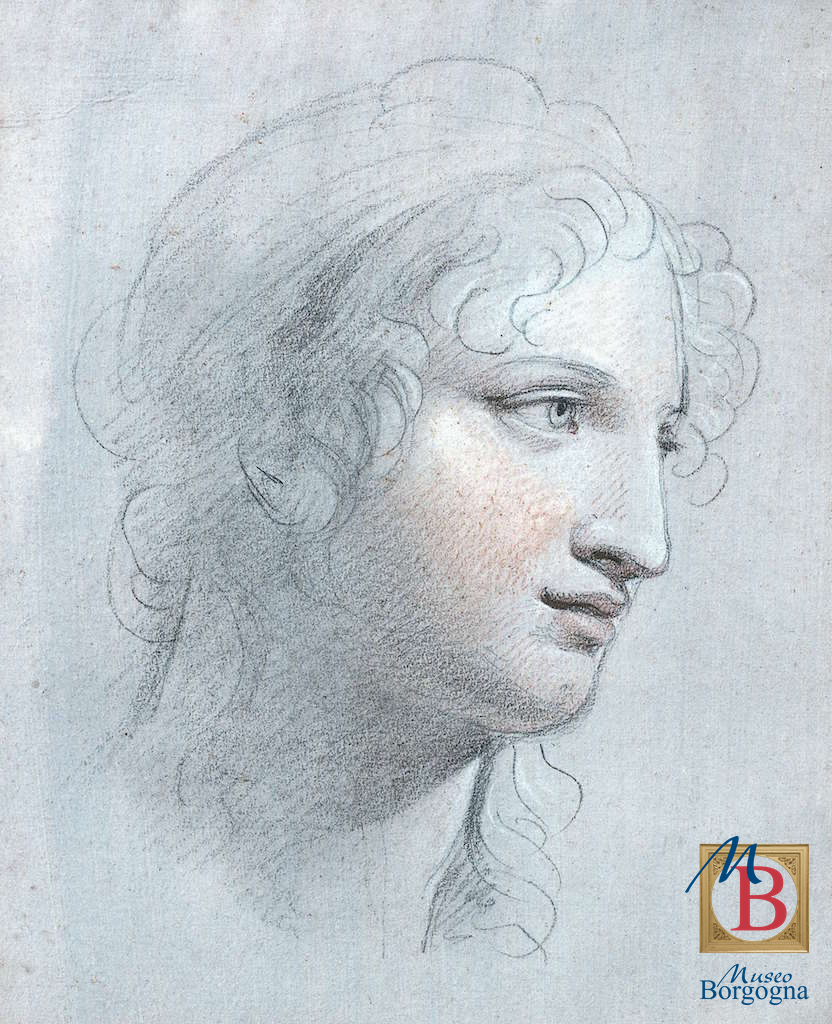
Collections of Borgogna Museum
Collections of Borgogna Museum are made of paintings, sculptures, drawings, pieces of decorative arts, photographic plates and a library (with both historical and contemporary publications)
The collections include paintings (like the remarkable section of ripped and detached wall paintings as well as altarpieces dating back to the fifteenth and the sixteenth centuries), sculptures, graphics, pieces of decorative arts, photographic plates and a library (with both historical and contemporary publications).
Almost 800 pieces are available to be viewed by the public through three different floors.
Layouts and displays are not permanent and new installations are often created due to art exhibitions temporarily housing our works, restorations, transfers from the Museum storage, gratuitous loans to use and gifts from private and public institutions.

The 15th- to 16th-century works of art collection, gathered by Borgogna and transferred from churches, confraternities and the Vercelli Institute of Fine Arts, constitute one of the most representative collections of the Piedmontese Renaissance.
The local painting school houses altarpieces and polyptychs, minor works of private devotion, fragments of wall paintings and panels of larger and more complex works. Among the most representative painters, we mention Gerolamo and Giovan Battista Giovenone, Bernardino Lanino, Defendente Ferrari, Gaudenzio Ferrari and Giovanni Martino Spanzotti’s studio.

From the ground floor, visitors can access the 17th- to 18th-century collection including paintings by Ludovico Carracci, Giovan Battista Salvi known as “il Sassoferrato”, Elisabetta Sirani, Luigi Miradori known as “il Genovesino”, Pietro Liberi, Carlo Maratta, Eustache Le Seur, Pietro Francesco Guala and Antonio Mayerle. Part of the collection is also accessible from the first floor and include works from the 18th century by foreign painters like Claude Joseph Vernet, Adrien Manglard and Angelica Kauffman. Here are also displayed 53 Flemish and Dutch paintings. Those by Ambrosius Bosschaert and Jan Davidsz De Heem represent the most significant section of the collection and have been accurately classified by professor Bert W. Meijer who published a catalogue in 2001. Copies of the catalogue are available to consult on all three floors of the museum and available to purchase at the museum bookshop.


The first rooms, adjacent to the entrance of the museum, house several works of decorative arts, furniture, paintings and sculptures from the 19th century reflecting Antonio Borgogna’s international and eclectic taste for art. These rooms have been redecorated to reveal the original set-up of the house-museum.
Part of the collection is also accessible from the first and second floor and include works in their original frames by Italian painters (Massimo D’Azeglio, Giovanni Migliara, Stefano Ussi, Gaetano Chierici, Gerolamo Induno, Francesco Lojacono, Filippo Palizzi, Giovan Battista Quadrone, Giacomo Favretto) as well as Belgian, German and Flemish painters (A.J. Severin Nikutowski, Friedrich Hiddeman, Johann Friedrich Hennings, Camilla Edle von Malhen Friedlander, Edmond Van Hove, Barend Cornelis Koekkoek and Luis Robbe).
After decades of storage and restoration works, sculptures and furniture are being added to the displays of the museum. These are marbles, bisque porcelains, wooden carvings and bronzes, some of which decorate the courtyards outside the building. Among them are works by Francesco Porzio, Gustav Eberlein, Leonardo Bistolfi, Antonio Carnevali, Francesco Toso, Valentino Panciera Besarel, Giuseppe Parvis, Filippo Cifariello.
Angelo Morbelli’s divisionist painting, For eighty cents!, dating back to 1895 and purchased by the museum in 1912, is displayed on the second floor and is among the most remarkable works of the museum in terms of technique representing rice cultivation as one of the main aspects of local history.

From the second floor of Antonio Borgogna’s building visitors can access the 20th century collection including works by artists from Vercelli and the region of Piedmont. This collection was obtained through purchases, donations and loans and was added to the museum displays after the death of Borgogna. It includes portraits by Ambrogio Alciati, Giacomo Grosso and Francesco Menzio, as well as paintings by Clemente Pugliese Levi, Lorenzo Delleani and Umberto Ravello representing landscapes, Giuseppe Cominetti’s impressive paintings and Francesco Porzio’s sculptures.

For preservation reasons, drawings and prints are usually stored as this type of works can’t be exposed to the light for long periods of time.
This collection includes 84 drawings that have been restored and placed in specific passepartouts. You must book in advance to see these amazing works. Pictures of the drawings and prints are included though in the catalogue written and published by Giulio Bora in 2003 and available to buy at the bookshop of the museum.